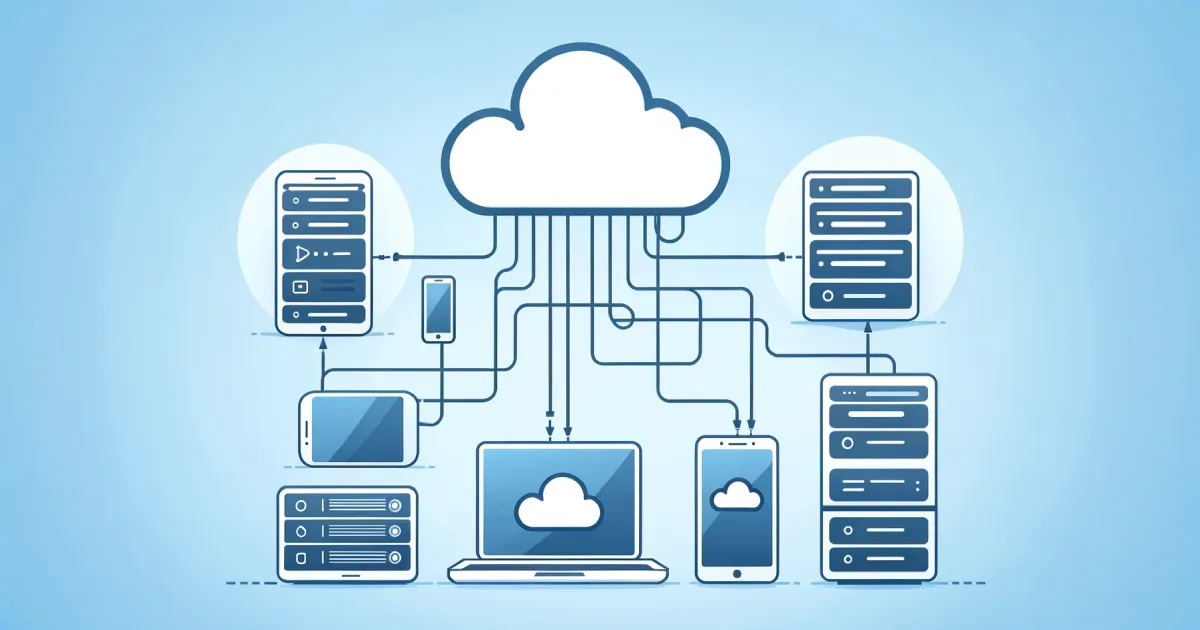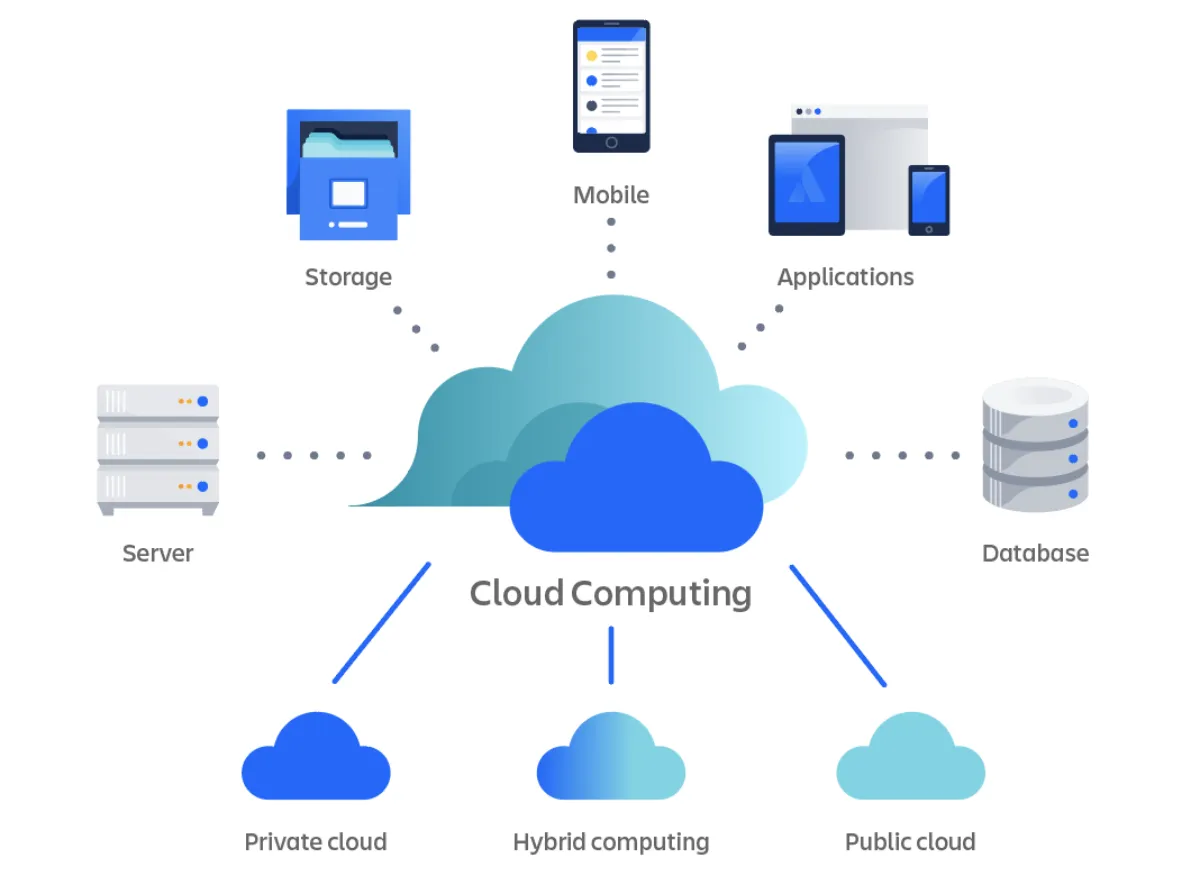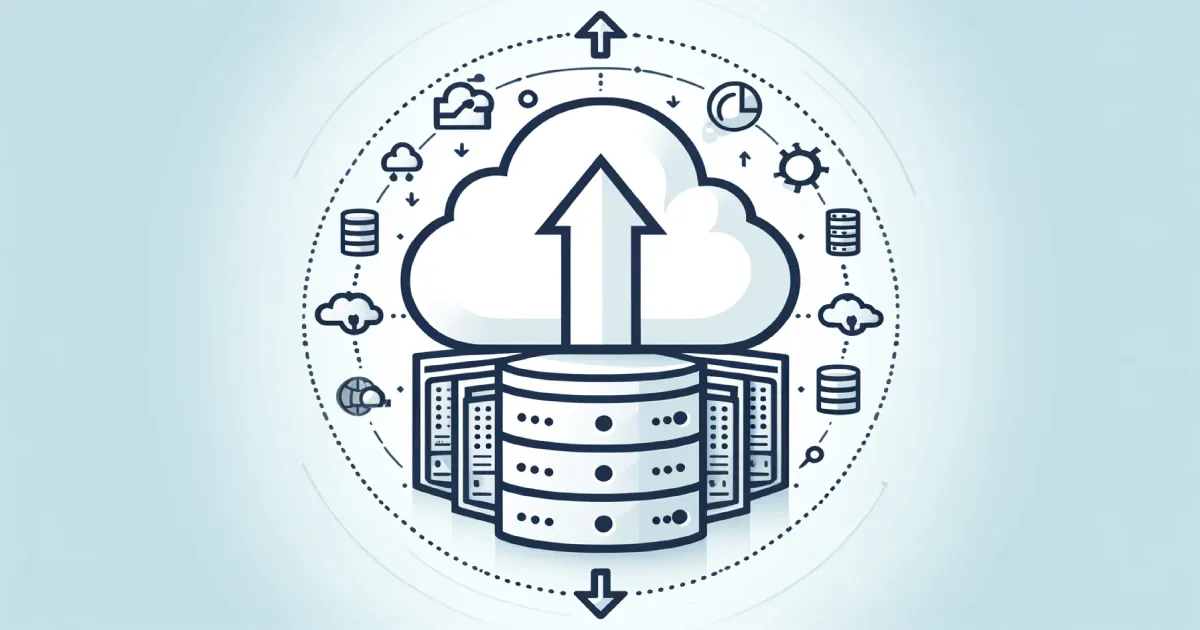Leveraging Cloud Computing for Business Growth

Cloud computing has completely changed how businesses work. It provides great flexibility, ability to grow, and cost savings. Businesses of all sizes around the world, from small startups to huge corporations, are using cloud technology. Cloud helps businesses grow, operate more efficiently, and gain an advantage over competitors.
This article takes a look at the many benefits of cloud computing and how it impacts different parts of a business. It also discusses strategies for effectively using cloud solutions to fuel business growth.
Understanding Cloud Computing

What is Cloud Computing?
Cloud computing refers to the delivery of computing services, including storage, processing power, and applications, over the internet ("the cloud"). Instead of owning and maintaining physical data centers and servers, businesses can access these resources on-demand from cloud service providers.
Types of Cloud Services
- Infrastructure as a Service (IaaS): Provides virtualized computing resources over the internet. Examples include Amazon Web Services (AWS) and Microsoft Azure.
- Platform as a Service (PaaS): Offers hardware and software tools over the internet, typically for application development. Examples include Google App Engine and Heroku.
- Software as a Service (SaaS): Delivers software applications over the internet on a subscription basis. Examples include Salesforce and Office 365.
Deployment Models
- Public Cloud: Services are delivered over the public internet and shared across multiple organizations.
- Private Cloud: Exclusive cloud environment for a single organization, offering greater control and security.
- Hybrid Cloud: Combines public and private clouds, allowing data and applications to be shared between them.

Benefits of Cloud Computing for Business Growth

Cost Efficiency
Cloud computing eliminates the need for significant upfront capital investment in physical infrastructure. Instead, businesses pay for what they use, converting capital expenses into operational expenses. This pay-as-you-go model reduces overall IT costs and allows companies to allocate resources more effectively.
Scalability and Flexibility
Cloud services provide the ability to scale resources up or down based on demand. This elasticity is crucial for businesses experiencing fluctuating workloads or rapid growth. Companies can quickly adapt to market changes without the constraints of physical infrastructure.
Enhanced Collaboration and Remote Work
Cloud computing enables seamless collaboration among employees, regardless of their physical location. Tools like Google Workspace and Microsoft Teams allow teams to work together in real-time, improving productivity and fostering innovation. Additionally, cloud solutions support remote work, which has become increasingly important in the modern business landscape.
Disaster Recovery and Business Continuity
Cloud services offer robust disaster recovery solutions that ensure data is backed up and can be restored quickly in the event of a failure. This minimizes downtime and protects against data loss, maintaining business continuity and safeguarding critical operations.
Advanced Security Features
Cloud service providers invest heavily in security measures to protect data and applications. These measures often surpass what individual businesses can afford to implement on their own. Features such as encryption, identity and access management, and regular security audits help protect sensitive information from cyber threats.

Impact of Cloud Computing on Business Functions

Marketing and Sales
- Data Analytics: Cloud-based analytics platforms like Google Analytics and Adobe Analytics provide valuable insights into customer behavior, enabling businesses to tailor marketing strategies and improve customer engagement.
- Customer Relationship Management (CRM): SaaS solutions like Salesforce offer comprehensive CRM capabilities, helping businesses manage customer interactions, track sales, and automate marketing campaigns.
Operations and Supply Chain Management
- Inventory Management: Cloud-based inventory management systems allow businesses to track stock levels in real-time, optimize inventory, and reduce carrying costs.
- Supply Chain Visibility: Cloud solutions enhance visibility across the supply chain, facilitating better coordination with suppliers and improving delivery times.
Human Resources
- Talent Management: Cloud-based HR platforms like Workday and BambooHR streamline recruitment, onboarding, and performance management processes.
- Employee Engagement: Tools such as Slack and Microsoft Teams promote communication and collaboration, enhancing employee engagement and satisfaction.
Finance and Accounting
- Financial Management: Cloud-based accounting software like QuickBooks and Xero automate financial processes, improving accuracy and efficiency.
- Financial Planning and Analysis: Cloud solutions provide real-time financial data and advanced analytics, supporting strategic decision-making.
Strategies for Effective Cloud Integration

Assessing Business Needs
Before migrating to the cloud, it is essential to assess the specific needs and objectives of the business. This involves evaluating current IT infrastructure, identifying areas for improvement, and setting clear goals for cloud adoption.
Choosing the Right Cloud Service Provider
Selecting a reliable cloud service provider is critical for a successful cloud strategy. Factors to consider include the provider's reputation, security measures, compliance with industry standards, and the range of services offered.
Developing a Cloud Migration Plan
A well-defined migration plan ensures a smooth transition to the cloud. This plan should include a timeline, resource allocation, and strategies for minimizing disruption to business operations. It is also important to conduct thorough testing to address any potential issues before fully migrating.
Ensuring Data Security and Compliance
Data security and compliance with regulatory requirements are paramount when adopting cloud solutions. Businesses should implement robust security measures, such as encryption and multi-factor authentication, and regularly review compliance with relevant laws and regulations.
Training and Change Management
Effective cloud integration requires training employees on new tools and processes. Change management strategies should be employed to address resistance to change and ensure a smooth transition. Providing ongoing support and resources helps employees adapt to the new environment.
Case Studies of Cloud Computing Driving Business Growth

Netflix
Netflix uses AWS for its streaming service, leveraging scalable infrastructure to handle massive data and deliver content to millions of users worldwide. This flexibility enables rapid expansion, high availability, and personalized recommendations, supporting global growth without significant upfront investment in physical infrastructure.
Airbnb
Airbnb utilizes AWS to manage global operations, including transactions and data storage. The cloud's scalability allows Airbnb to handle peak demand periods smoothly. AWS's tools help optimize the platform for speed and reliability, enhancing user satisfaction and supporting data-driven improvements in listings and pricing strategies.
General Electric (GE)
GE adopted a hybrid cloud strategy using AWS and other services to modernize IT infrastructure. Migrating critical applications to the cloud reduces costs, enhances data analytics, and accelerates innovation. This approach supports faster deployment of new applications and services, allowing GE to respond quickly to market demands.
Spotify
Spotify uses Google Cloud Platform (GCP) to manage user data and streaming requests. This scalable infrastructure enables Spotify to deliver personalized music recommendations and playlists to millions globally. The cloud integration allows Spotify to handle peak usage seamlessly, improve user experience with advanced data analytics, and focus on innovation without infrastructure concerns.
Unilever
Unilever adopted a hybrid cloud strategy using Microsoft Azure to streamline operations and enhance efficiency. The cloud services have improved Unilever's supply chain management, data analytics, and product development cycles. This transition optimizes logistics, reduces costs, and enhances responsiveness to market demands, supporting the company's growth and competitiveness.
Challenges and Solutions in Cloud Adoption

Data Privacy and Security Concerns
While cloud providers invest heavily in security, businesses must also implement their own measures to protect sensitive data. Regular security audits, encryption, and access controls are essential to mitigate risks.
Managing Costs
While the cloud offers cost savings, it is important to monitor usage and manage costs effectively. Implementing cost management tools and practices, such as budgeting and resource optimization, helps prevent unexpected expenses.
Integration with Legacy Systems
Migrating from legacy systems to the cloud can be complex and challenging. Businesses should develop a phased migration strategy, prioritize critical applications, and use integration tools to ensure compatibility and minimize disruption.
Downtime and Reliability
Ensuring high availability and minimizing downtime is crucial for business continuity. Choosing a reputable cloud provider with robust SLAs (Service Level Agreements) and implementing redundancy and backup solutions helps maintain reliability.
Future Trends in Cloud Computing

Artificial Intelligence and Machine Learning
Cloud platforms are increasingly integrating artificial intelligence (AI) and machine learning (ML) capabilities. These technologies enable businesses to analyze large datasets, automate processes, and gain predictive insights, driving smarter decision-making.
Edge Computing
Edge computing involves processing data closer to its source, reducing latency and improving performance. This trend is particularly relevant for applications requiring real-time processing, such as IoT devices and autonomous vehicles.
Multi-Cloud Strategies
Businesses are adopting multi-cloud strategies to leverage the strengths of different cloud providers and avoid vendor lock-in. This approach enhances flexibility, resilience, and the ability to optimize costs.
Serverless Computing
Serverless computing allows businesses to run applications without managing the underlying infrastructure. This model reduces operational complexity and enables developers to focus on writing code, accelerating innovation.
Final Thoughts
Cloud computing is a driving force that helps businesses grow. It provides many advantages that improve efficiency, ability to scale up or down easily, and innovation. By understanding the different cloud services and ways to deploy them, evaluating what the business needs, and putting effective strategies in place, companies can unleash the full power of cloud technology.
As cloud computing keeps advancing, businesses that adopt these new developments will be in a strong position to succeed in an increasingly competitive and rapidly changing business environment.
Key Takeaways
| Section | Key Points |
|---|---|
| Cloud Computing Basics | On-demand access to services like IaaS, PaaS, and SaaS over the internet. |
| Benefits | Cost savings, scalability, improved collaboration, disaster recovery, and enhanced security. |
| Business Impact | Boosts marketing, operations, HR, and finance efficiency. |
| Integration Strategies | Assess needs, choose a provider, create a migration plan, ensure security, and train staff. |
| Case Studies | Successful examples include Netflix, Airbnb, and GE using cloud for growth. |
| Future Trends | AI and ML, edge computing, multi-cloud use, and serverless computing. |
| Challenges and Solutions | Address security, control costs, integrate legacy systems, and ensure reliability. |
| Final Thoughts | Cloud computing drives business growth through efficiency, scalability, and innovation. |
Frequently Asked Questions (FAQs)
- What are the main benefits of cloud computing for businesses?
The main benefits include cost efficiency, scalability, enhanced collaboration, disaster recovery, and advanced security features. - How does cloud computing support remote work?
Cloud computing supports remote work by enabling access to applications and data from any location with an internet connection, facilitating real-time collaboration. - What is a hybrid cloud?
A hybrid cloud combines public and private cloud environments, allowing data and applications to be shared between them, offering greater flexibility and optimization. - How can businesses ensure data security in the cloud?
Businesses can ensure data security by implementing encryption, multi-factor authentication, regular security audits, and adhering to compliance regulations. - What is serverless computing?
Serverless computing allows businesses to run applications without managing the underlying infrastructure, enabling developers to focus on writing code and accelerating innovation.





